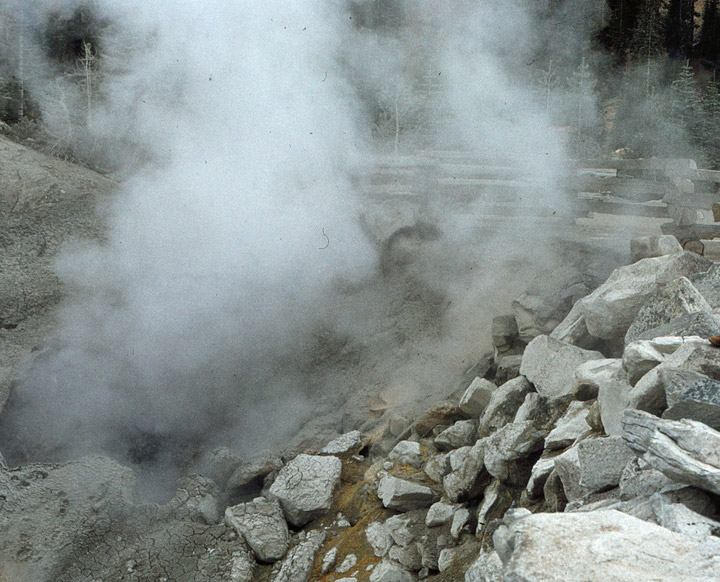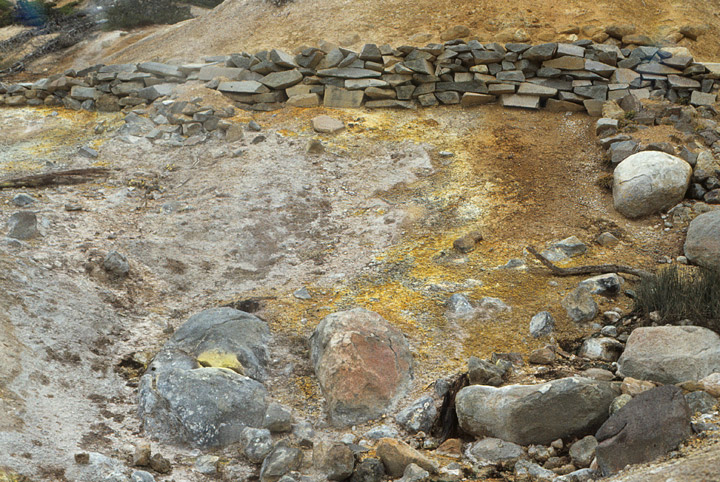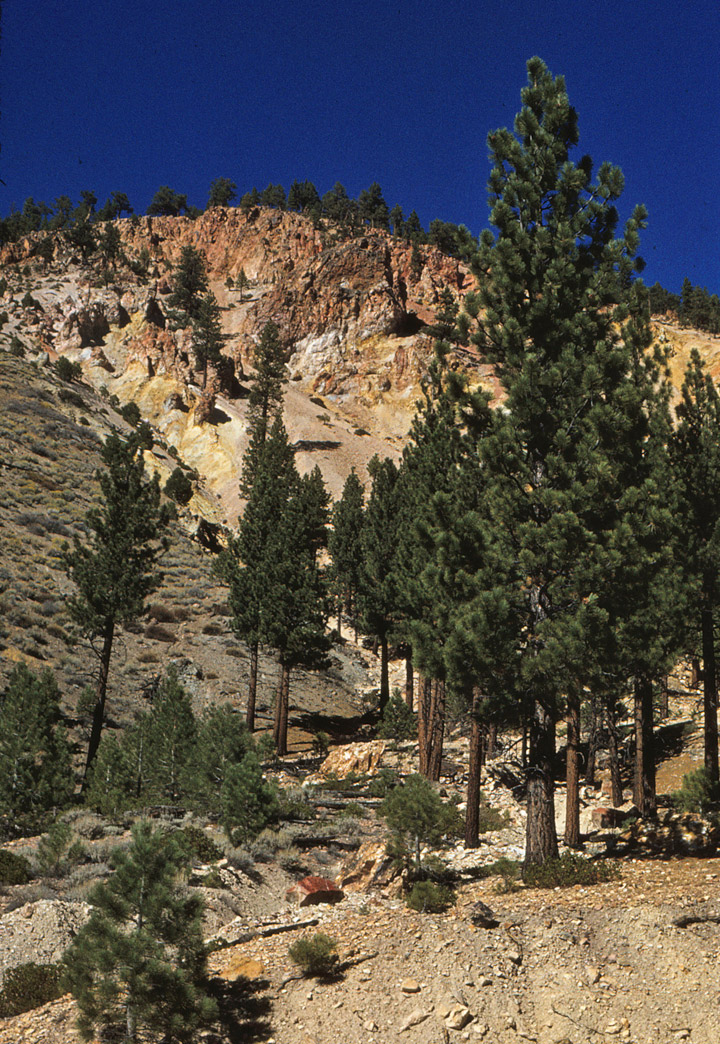

Lassen Peak

Lassen Peak
Lassen Peak (also known as Mount
Lassen) is the southernmost active volcano in the Cascade Range. It is part of
the Cascade Volcanic Arc which is an arc that stretches from northern California
to southwestern British Columbia. Located in the Shasta Cascade region of
Northern California, Lassen rises 2,000 feet (610 m) above the surrounding
terrain and has a volume of half a cubic mile, making it one of the largest lava
domes on Earth. It was created on the destroyed northeastern flank of now gone
Mount Tehama, a stratovolcano that was at least a thousand feet (300 m) higher
than Lassen.
Lassen Peak has the distinction of being the only other volcano in the Cascades
besides Mount St. Helens to have erupted during the 20th century. On May 22,
1915, an explosive eruption at Lassen Peak devastated nearby areas and rained
volcanic ash as far away as 200 miles (320 km) to the east. This explosion was
the most powerful in a 1914–17 series of eruptions that were the last to occur
in the Cascades before the 1980 eruption of Mount St. Helens in Washington.
Lassen Volcanic National Park was created in Shasta County, California to
preserve the devastated area and nearby volcanic wonders.

Unlike most lava domes, Lassen is topped by craters. In fact, a series of these
craters exist around Lassen's summit, although two of these are now covered by
solidified lava and sulfur deposits. Lassen is the largest of a group of more
than 30 volcanic domes that have erupted over the past 300,000 years in the
Lassen Volcanic Center.
Lassen has the highest known snowfall amounts for California. With an average
annual snowfall of 660 inches (16.76 m) , and some years receiving over 1,000
inches (25.4 m) of snow at its base of 8,250 feet (2,514 m) at Lake Helen. Mt.
Lassen gets more precipitation (rain, hail, melted snow) anywhere in the
Cascades south of the Three Sisters volcanoes. This heavy snowfall allows Lassen
to retain 14 permanent patches of snow despite Lassen's modest elevation.
Lightning has been known to frequently strike the summit of the volcano during
summer thunderstorms.

Lassen is the southernmost in the chain of 18 large volcanic peaks that run from
southwestern British Columbia to northern California. The peaks formed in the
past 35 million years as the Juan De Fuca plate and the tiny Gorda plate to its
south have been pulled under the overriding North American plate. As the oceanic
crust in the Juan de Fuca plate melts under the pressure, it creates pools of
lava that drive up the Cascade Range and power periodic eruptions in its
volcanic peaks.
Roughly 27,000 years ago, Lassen started to form as a mound-shaped dacite lava
dome pushed its way through Tehama's destroyed north-eastern flank. As the lava
dome pushed its way up, it shattered overlaying rock, which formed a blanket of
angular talus around the emerging steep-sided volcano (it looked much like the
nearby 1,100-year-old Chaos Crags). Lassen rose and reached its present height
in a relatively short time, probably in as little as a few years.

From 25,000 to 18,000 years ago, during the last glacial period of the current
ice age, Lassen’s shape was significantly altered by glacial erosion. For
example, the bowl-shaped depression on the volcano’s northeastern flank, called
a cirque, was eroded by a glacier that extended out 7 miles (11 km) from the
dome.
Lassen's most recent eruptive period started in 1914 and lasted for seven years
(see below). The most powerful of these eruptions was a 1915 episode that sent
ash and steam in a ten-kilometer-tall mushroom cloud, making it the largest
recent eruption in the contiguous 48 U.S. states until the 1980 eruption of
Mount St. Helens. The region remains geologically active, with mud pots, active
fumaroles, and boiling water features, several of which are getting hotter. The
area around Mount Lassen and nearby Mount Shasta are considered the most likely
volcanoes in the Cascade Range to shift from dormancy to active eruptions
Text from Wikipedia